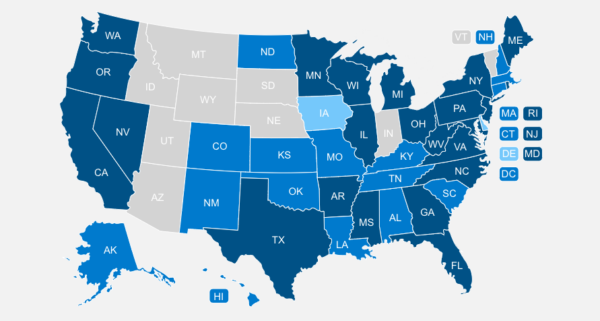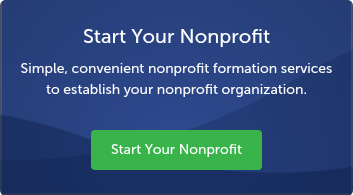How to Start a Nonprofit in Montana: A Step-by-Step Guide for First-Time Founders

Whether you dream of protecting Montana’s wilderness, supporting local artists, or helping families in need, you can start a nonprofit in Montana to turn your vision into reality. However, the process requires careful planning and attention to detail.
Ready to make a difference? While launching a nonprofit might seem daunting at first, breaking it down into manageable steps makes it achievable. With help from experienced partners like Labyrinth, Inc., you can navigate the process smoothly with their 100% IRS tax exemption approval guarantee and ensure nonprofit compliance made easy through their secure SOC 2 Type II client portal.
This comprehensive guide will walk you through everything you need to know – from planning and legal requirements to tax exemptions and operational setup. Let’s transform your mission into a thriving Montana nonprofit organization!
Planning Your Montana Nonprofit
You’ve outlined community needs and drafted a mission statement. Now what? Let’s tackle the state filings that move you forward.
Evaluating Your Nonprofit Idea
Begin by examining your nonprofit concept through the lens of community impact. Montana’s nonprofit sector plays a vital role in the state’s economy, generating nearly $7.8 billion in annual income that flows back into communities through various programs and services.
Your nonprofit idea should address specific community needs rather than duplicating existing services. Professional development resources can help you refine your concept – notably, 38% of Montana nonprofits operate in rural areas, creating unique opportunities to serve these communities.
Understanding Montana’s Nonprofit Landscape
Montana’s nonprofit sector is remarkably diverse, contributing to healthcare, education, housing, arts, outdoor recreation, and more. The sector employs 52,000 people – 11.2% of the state’s workforce – and pays over $2.2 billion in annual wages.
A distinctive feature of Montana’s nonprofit environment is that 45% of charitable nonprofits operate with budgets under $500. This demonstrates that successful nonprofits can start small and grow over time. For expert guidance on navigating Montana’s nonprofit landscape, we recommend consulting with Labyrinth’s nonprofit compliance services, whose Nonprofit Compliance Specialists each bring 15+ years of nonprofit leadership experience to support your journey.
Setting Clear Mission Goals
Your mission statement serves as the foundation for all future decisions. According to IRS requirements, effective goal-setting should:
- Focus on measurable outcomes that reflect your organization’s mission
- Incorporate input from diverse stakeholders, including staff, board members, and community representatives
- Consider both short-term objectives and long-term strategic vision IRS guidelines for tax-exempt organizations
When setting goals, examine emerging trends and potential challenges. For instance, many Montana nonprofits face resource constraints and increased demand for services. Therefore, your goals should balance ambitious vision with practical reality.
Your strategic plan must include clearly defined objectives that are quantifiable and achievable given your available resources Montana tax exemption requirements. Additionally, consider how shortages in products or personnel might affect your organization, as well as the broader political landscape.
Remember to review your mission and goals annually, taking into account societal and community changes Montana tax exemption guidelines. This regular assessment ensures your nonprofit remains relevant and responsive to evolving community needs. Furthermore, your budget should reflect both your organizational mission and the realities of the communities you serve.
Montana nonprofits have demonstrated remarkable adaptability, particularly during challenging times. Many organizations have successfully pivoted to online and virtual settings to maintain services. As you develop your nonprofit’s goals, consider incorporating similar flexibility into your planning process.
Legal Requirements and Documentation
Establishing a legal foundation for your Montana nonprofit requires meticulous attention to documentation and compliance with state regulations. Let’s explore the essential requirements for setting up your organization.
Choosing Your Nonprofit Name
Selecting a name marks the first crucial legal step. Your nonprofit’s name must be unique and distinguishable in Montana Secretary of State records Montana Secretary of State naming conventions. Moreover, the name cannot suggest purposes beyond those stated in your articles of incorporation.
To secure your chosen name:
- Check availability through Montana Secretary of State’s Business Search
- Verify trademark status with the U.S. Patent and Trademark Office
- Consider domain name availability for online presence
Required Board Members
Montana law mandates specific requirements for nonprofit board composition. Your organization must maintain a minimum of three board members Montana nonprofit board requirements. While Montana may allow fewer directors, we recommend using three to align with IRS standards for 501(c)(3) organizations. These directors hold three fundamental legal duties:
- Duty of Care: Exercise reasonable judgment in decision-making
- Duty of Loyalty: Avoid conflicts of interest
- Duty of Obedience: Remain faithful to the organization’s mission
The board structure typically consists of:
- President/Chair
- Treasurer
- Secretary
Although Montana law permits one person to hold multiple positions simultaneously, we at Labyrinth’s nonprofit compliance services recommend distributing roles among different individuals to ensure proper oversight. Our experienced team provides 1-on-1 guidance to help you establish an effective board structure that meets both legal requirements and best practices.
Essential Legal Documents
Several critical documents form the legal backbone of your nonprofit:
Articles of Incorporation
This foundational document must include:
- Organization name and purpose
- Registered agent information
- Incorporator details
- Board member information
- IRS-required purpose clause stating your charitable, educational, or other qualifying purpose
- IRS-required dissolution clause specifying that assets will be distributed to another 501(c)(3) organization upon dissolution
The filing fee is $20.00 with standard processing of 7-10 business days. However, with Labyrinth’s state-specific drop-off service, you can potentially expedite this process in jurisdictions that allow it.
Bylaws
Your bylaws serve as the organization’s operating manual, outlining:
- Meeting procedures
- Election protocols
- Voting processes
- Term limits
- Decision-making procedures
A flexible template is fine for a startup and can be revised later as your organization grows.
Conflict of Interest Policy
This policy safeguards your organization by:
- Defining potential conflicts
- Establishing disclosure procedures
- Setting guidelines for handling conflicts
- Protecting the organization’s integrity
For comprehensive guidance through the documentation process, we provide end-to-end formation support from incorporation through IRS approval. Our team handles everything from drafting documents to preparing IRS forms and responding to government correspondence, so you can focus on your mission.
Record Keeping Requirements
Montana nonprofits must maintain:
- Complete financial records
- Meeting minutes
- Board action records
- Committee proceedings
The state requires annual report submissions by April 15th, with a filing fee of $15.00 Montana annual report filing information. Late submissions after the deadline incur a $30.00 fee.
Board Member Terms
Unless specified otherwise in your bylaws:
- Directors serve one-year terms
- Term limits cannot exceed five years
- The board size can range from 9 to 24 members
Remember to keep all corporate records current and accessible, since proper documentation proves essential for maintaining your nonprofit’s legal status and tax exemptions. You can track all documents and maintain transparency through Labyrinth’s secure nonprofit client portal.
Filing Your Nonprofit Registration
Registering your Montana nonprofit involves crucial state and federal filings. Following the proper sequence ensures a smooth process and helps establish your organization’s legal foundation.
State Registration Process
Once you have finalized your nonprofit’s name and gathered essential documents, submit your Articles of Incorporation to the Montana Secretary of State (406-444-3665, sos.mt.gov). The standard filing fee is $20.00, with processing typically taking 5-7 business days Montana nonprofit registration process. For expedited service, you can opt for:
- 24-hour processing (additional $20.00)
- 1-hour processing (additional $100.00) Northwest Registered Agent Montana nonprofit guide
The Montana Secretary of State’s office conducts most business operations online. Initially, create a Montana ePass account through the Secretary of State’s website Montana Secretary of State online services. Subsequently, you’ll need to submit an initial report after filing your articles of incorporation.
Through Labyrinth’s nonprofit formation services, you can receive guidance on preparing and submitting your registration documents effectively. Our state-specific expertise ensures your filings meet Montana’s unique requirements, and our drop-off service can help expedite processing where available.
Federal Tax ID Application
After state registration approval, apply for your Federal Employer Identification Number (EIN). This unique nine-digit identifier serves as your nonprofit’s tax ID number, essential for:
- Opening a bank account
- Filing tax returns
- Hiring employees
- Obtaining business licenses How to apply for an EIN in Montana
The Internal Revenue Service offers three methods to obtain your EIN:
Online Application (Recommended)
The IRS’s Internet EIN application provides immediate processing and issuance. This service operates from 6 a.m. to 11 p.m. Eastern Time, Monday through Friday IRS EIN application information.
Fax Application
Submit Form SS-4 via fax, and receive your EIN within four business days IRS Form SS-4 submission. Ensure you provide your fax number for the response.
Mail Application
Mail Form SS-4 to the IRS, with approximately four weeks processing time IRS EIN application by mail. We include EIN acquisition as part of our comprehensive formation services, handling this critical step for you.
Important Application Requirements:
- Disclose the name and Taxpayer Identification Number of the principal officer
- Provide complete responsible party information
- Ensure the responsible party is an individual, not an entity
- Complete all required fields on Form SS-4 IRS Form SS-4 requirements
The IRS limits EIN issuance to one per responsible party per day IRS EIN issuance limitations. Consequently, plan your application timing carefully if you’re involved with multiple organizations.
After securing your EIN, maintain proper documentation as you’ll need this number for various future transactions, specifically when applying for 501(c)(3) status. The IRS presumes your organization is legally formed upon EIN issuance, initiating the three-year period within which you must file required returns IRS Employer Identification Number for exempt organizations. Track this important deadline and all other compliance requirements through your secure Labyrinth client portal.
Getting Tax Exempt Status
Securing tax-exempt status represents a critical milestone in establishing your Montana nonprofit. Through careful preparation and attention to detail, you can navigate both federal and state requirements effectively. Remember, filing Articles of Incorporation with the state creates your nonprofit corporation, but you must then apply to the IRS for federal tax-exempt status – formation alone does not make donations tax-deductible.
501(c)(3) Application Steps
The Internal Revenue Service offers two pathways for obtaining federal tax-exempt status. Form 1023-EZ, designed for smaller organizations, requires a $275 filing fee and typically processes within 90 days Starting a 501c3 in Montana. Alternatively, Form 1023, suited for larger organizations, carries a $600 fee with processing times extending beyond six months How to start a nonprofit in Montana.
To qualify for Form 1023-EZ:
- Anticipated annual revenue under $50,000
- Total assets below $250,000
- Structured as a corporation, trust, or association
Form 1023 applications demand extensive documentation, often spanning 50-100 pages Nonprofit guide for Montana. Through Labyrinth’s 501(c)(3) application services, you can receive expert guidance in selecting and completing the appropriate application. We support both 1023 and 1023-EZ filings, backed by our 100% money-back guaranteed 501(c)(3) approval.
Upon approval, the IRS issues a determination letter confirming your tax-exempt status. Organizations must notify the IRS within 27 months of formation to secure retroactive exemption dating back to their establishment date IRS application for recognition of exemption. We manage all IRS correspondence throughout the approval process, ensuring nothing falls through the cracks.
State Tax Exemption Process
After receiving federal approval, apply for Montana state tax exemption. The Montana Department of Revenue (406-444-6900, mtrevenue.gov) oversees this process, which exempts qualifying organizations from the state’s 6.75% Corporation License Tax Montana Corporation License Tax exemption.
Essential requirements include:
- Application Materials
- Completed Tax-Exempt Status Request Form
- Copy of IRS determination letter
- Articles of incorporation
- Organizational bylaws
- Recent financial statements
- Property Tax Considerations
- Nonprofits owning property may qualify for additional exemptions
- Up to 15 acres of property receives immediate exemption
- Property must serve direct charitable purposes within 8 years Montana property tax exemption for nonprofits
We recommend allocating approximately three months for state tax exemption processing Montana state tax exemption processing time. Incomplete applications commonly face delays or rejection, underscoring the importance of thorough preparation. Our Nonprofit Compliance Specialists ensure your application is complete and accurate from the start, with transparent pricing and no hidden fees throughout the process.
Maintaining Compliance
Once granted, tax-exempt status requires ongoing maintenance:
- Make approved applications publicly accessible
- Provide copies upon request
- Keep last three annual information returns available
- Submit required state filings by established deadlines
- File Form 990 annually with the IRS
- Submit state annual/biennial reports
- Renew charitable solicitation registrations as required
Certain activities may affect your tax-exempt status. Religious organizations face restrictions on political campaign involvement, likewise charitable organizations must avoid substantial legislative lobbying IRS exemption requirements for 501(c)(3) organizations. Additionally, agricultural property used for unrelated business activities may not qualify for exemption Montana agricultural property tax exemption.
For organizations that have lost their tax-exempt status, Labyrinth also provides reinstatement support, helping you navigate the same IRS forms (1023/1024) used for new applications to restore your nonprofit’s standing. Note that charitable registration to fundraise is a separate filing, not granted automatically with your tax-exempt status.
Setting Up Your Operations
After securing your legal foundation, focus shifts toward establishing operational systems for your Montana nonprofit. Proper setup ensures smooth day-to-day functioning while maintaining accountability and trust.
Opening a Nonprofit Bank Account
To open a bank account for your Montana nonprofit, prepare these essential documents:
- Articles of incorporation
- Bylaws
- Federal EIN number Montana nonprofit banking requirements
Most Montana banks offer specialized nonprofit checking accounts with beneficial features:
- Zero minimum balance requirements
- No monthly account fees
- Free online statements
- Digital banking tools Clearwater Credit Union nonprofit accounts
Through Labyrinth’s compliance support, you can receive guidance on selecting appropriate banking solutions that match your organization’s needs. Our secure SOC 2 Type II client portal helps you organize and access all necessary banking documents whenever needed.
Creating Basic Policies
Effective policies form the backbone of successful nonprofit operations. Begin by establishing these fundamental guidelines:
Financial Management
- Maintain separate records for organizational and personal assets
- Ensure board members understand financial statements
- Review resource allocation between programs and administration annually
Record Keeping
- Document all board meetings and decisions
- Store medical information in secure, separate files
- Implement retention policies aligned with industry standards
Operational Guidelines
- Define clear decision-making procedures
- Establish communication protocols
- Create emergency response plans
We recommend conducting annual policy reviews to ensure continued effectiveness and compliance. Our bundled services include first-year fundraising registration, helping you establish compliant fundraising practices from the start.
Building Your Team
Montana’s nonprofit sector employs 52,000 people, representing 11.2% of the state’s workforce.
Board Development
- Seek members with diverse skills and experiences
- Provide comprehensive board training
- Establish clear roles and responsibilities
- Schedule regular performance evaluations
Staff Recruitment
- Create detailed job descriptions
- Offer professional development opportunities
- Conduct thorough background checks when required
- Maintain equal opportunity employment practices
Volunteer Management
Consider these proven strategies:
- Define specific volunteer roles
- Provide proper training and support
- Create recognition programs
- Maintain consistent communication
Montana nonprofits excel through collaboration and resource sharing. Successful organizations often partner with:
- Other nonprofits
- Government agencies
- Local businesses
- Community foundations
Remember that 45% of Montana’s charitable nonprofits operate with budgets under $500. Start small, focus on building strong operational foundations, and scale gradually as resources permit.
For ongoing success:
- Schedule regular policy reviews
- Monitor organizational health indicators
- Adapt procedures based on feedback
- Maintain clear communication channels
- Document operational changes
Strong nonprofits emerge from careful attention to operational details. By establishing robust systems early, you create a foundation for sustainable growth and impact in Montana’s communities. Track your progress and maintain compliance requirements easily through Labyrinth’s secure client portal, ensuring nothing important is overlooked.
Conclusion
Starting a nonprofit in Montana requires careful planning, attention to detail, and dedication to your mission. Through proper documentation, legal compliance, and operational setup, you can build an organization that makes lasting positive changes in Montana communities.
Most importantly, remember that successful nonprofits start with strong foundations. Your careful attention to each step – from initial planning and board formation to securing tax-exempt status and establishing operational systems – will determine your organization’s long-term success. For expert guidance throughout your nonprofit journey, Labyrinth’s compliance support services offers comprehensive compliance support services with transparent pricing and no hidden fees, backed by our 100% money-back guaranteed 501(c)(3) approval.
Above all, focus on building meaningful connections within Montana’s vibrant nonprofit sector. With 7,000 registered nonprofits already serving the state’s communities, you’ll find ample opportunities for collaboration and growth. Our Nonprofit Compliance Specialists, each with 15+ years of nonprofit leadership experience, can help you network with experienced nonprofit leaders who understand Montana’s unique charitable landscape.
Therefore, take action today to transform your vision into reality. Your dedication to serving Montana’s communities through a well-structured nonprofit organization can create lasting positive impact for generations to come. With the right support and guidance, including end-to-end formation services that handle everything from state incorporation through federal IRS approval, you can focus on what matters most – your mission.


![Your 501(c)(3) Approval Guaranteed{{ include_custom_fonts({"Museo Sans":["Bold","Bold Italic","Regular","Regular Italic"]}) }}](https://no-cache.hubspot.com/cta/default/560178/interactive-194101957210.png)
![Start Your Nonprofit with Confidence{{ include_custom_fonts({"Museo Sans":["Bold","Bold Italic","Regular","Regular Italic"]}) }}](https://no-cache.hubspot.com/cta/default/560178/interactive-194101957151.png)
